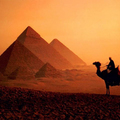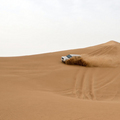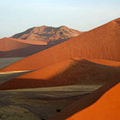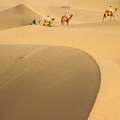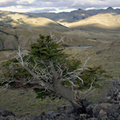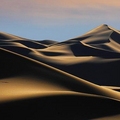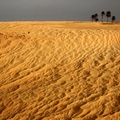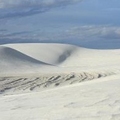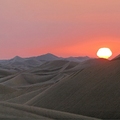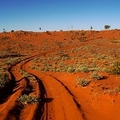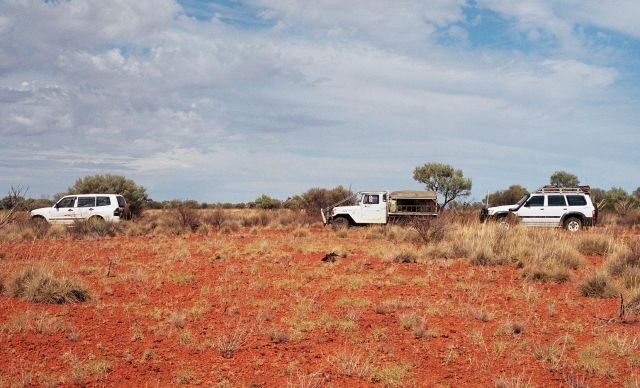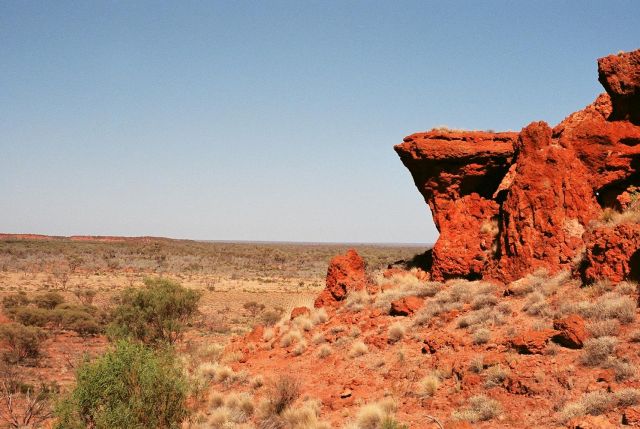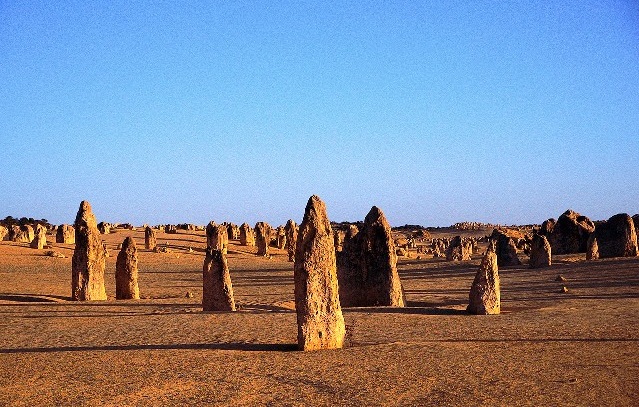Eco-friendly locations / The Largest Deserts in the World / The Great Victoria Desert, Australia
The Great Victoria Desert, Australia
The Great Victoria Desert is a sandy-saline desert in Australia (the states of Western Australia and South Australia ). It has an area of 424 400 km ², while the length from the east to the west is over 700 km. To the north of the desert is the Gibson desert , to the south the Nullarbor Plain . Due to the adverse climatic conditions (arid climate) there is not any agricultural activity in the desert. It is a protected area of Western Australia. The Mamungari Conservation Park is a protected area situated on the territory of South Australia, one of 12 biosphere reserves in Australia. The average annual rainfall varies from 200 to 250 mm of rain. There are frequent thunderstorms (15-20 per year). The daytime temperatures in summer is of 32-40 ° C and in winter of 18-23 ° C. Snow never falls in the desert. The desert is covered with red sand . Mainly spiny xerophytic grass grows on the dunes separated by ridges of dunes and clay saline plains where shrubs acacia grow in the south and stunted eucalyptus trees in the north. Most part of the desert is inhabited and there are also several groups of Victoria Australian Aborigines , including the kogara and mirning tribes. Named in the honor of Queen Victoria, Australia gave a British researcher Ernest Giles , who in 1875 was the first Europeans to cross the desert.
Write your Review on The Great Victoria Desert, Australia and become the best user of Bestourism.com
Others The Largest Deserts in the World .
Maps of The Great Victoria Desert, Australia
map AustraliaOthers from The Largest Deserts in the World
Under such dry conditions it is hard for the plants to live and the soils to form.
There is anything that protects the earth from overheating in these areas.
The hottest place on the Earth is the tropical desert, but there are coldest , even icy deserts, for instance, Antarctica.
Deserts cover approximately 20% of the Earth's land surface and 80% in Australia , therefore, a fifth of the Earth's land area belongs to the deserts.
Many of the major deserts are located near the tropics, such as the Sahara desert which is the largest desert in the world, as well as the Kalahari, the Namib Desert and the Grand Victoria in Australia.
Droughts During the grazing of cattle during droughts disorders of vegetation occur.
They are so significant that are likely unrecovered.
The sun's rays quickly dry the soil and turn to dust, which happens to desertification, a continuous transformation of the land in the desert.
A desert with a change in climatic conditions can always shrink and expand.
The long-term global climate change or contraction of the continents can garden the desert or turn it into a magnificent forest.
Short-lived changes in weather conditions influence the expansion of its borders, turning occasionally green areas in arid deserts.
The hottest places on the Earth are the tropical desert, where the daytime temperatures often reach +50 ° C.
This heat can destroy the stones and give the landscape an unusual character.
The underground water evaporates so quickly that minerals are dissolved from the crust.
Deserts are constantly dry, but in other natural areas prolonged dry periods can occur - the droughts.
Their presence in any place depends on what kind of rainfall is there.
There was a drought in Sahel, Africa, that lasted many months without rain.
However, droughts are regular and in some places they are with a typical moisture content, such as the North American grasslands which dry up every 22 years.
Water plays a significant role in shaping the dry landscape, despite of its low quantity in the desert .
Water alters the chemical composition of rocks, now and then it is dumped in the desert from the sky, at times becoming the cause of short, but strong flash floods, which are harmful to the soil.
Do all the deserts have very high temperatures and a lot of sand? We call a desert an area where not more than 25 inches of rain falls per year.
As a rule, deserts are formed in the hot desert climates, but there are exceptions.
Most deserts have a lot of rocks and stones and sand.
What is the biggest desert? The most extensive deserts are located in areas of high atmospheric pressures.
All the winds blow in areas of their inner regions, but the moist winds from the sea reach them very rarely.
There are those deserts, which are near the sea, and yet the sea winds will reach them, they lose most of moisture on the way.
Certain deserts are formed on the internal continental slopes of mountain ranges, well sheltered from the sea winds.
Almost all of Antarctica is a huge frozen desert, which is located in an area of high pressure, so that its interior is extremely small drops of fresh snow.
The driest desert in the world.
In many deserts there is no rain for several years in a row, then a short downpour happens and everything starts all over again.
The most arid desert is the Atacama Desert in South America .
Until 1971, there were 400 years without spilling a drop.
It is known that in several places in the desert, there are artesian waters, but the high boron content makes them unsuitable for irrigation.
What is an oasis? An oasis is a plot of land in the desert, which is covered with vegetation.
It feeds from underground springs or natural wells.
The largest desert in the world The largest desert in the world is the Sahara Desert in North Africa.
Its area is of approximately 8400 sq.
km.
However, only ten percent of its territory is covered with sand, and everything else is taken by bare rocks and stones.
After Sahara, we have the Arabian desert, the Gobi, the Patagonian,the Rub’ al Khali, the Great Victoria, the Kalahari, the Great Basin, the Chihuahuan and the Thar.

